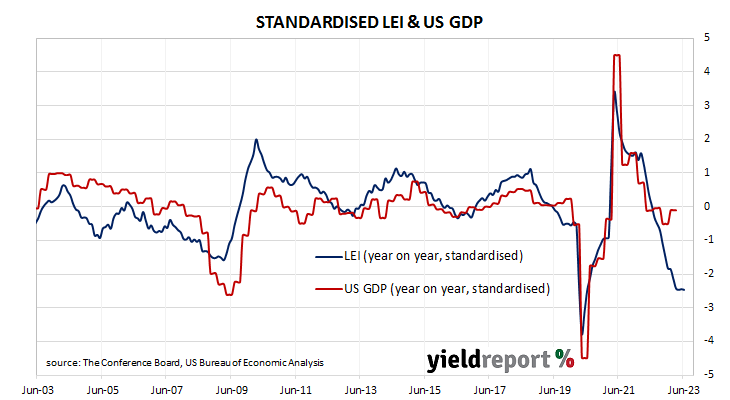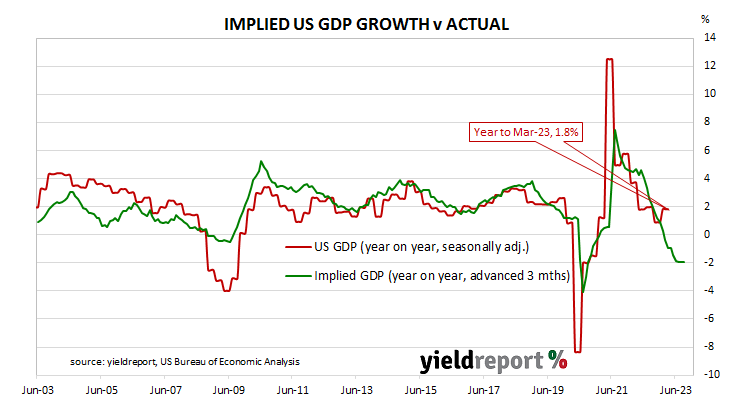Summary: Conference Board leading index down 0.7% in June, slightly worse than expected; longest streak of consecutive decreases since 2007/2008; regression analysis implies 2% contraction in year to September.
The Conference Board Leading Economic Index (LEI) is a composite index composed of ten sub-indices which are thought to be sensitive to changes in the US economy. The Conference Board describes it as an index which attempts to signal growth peaks and troughs; turning points in the index have historically occurred prior to changes in aggregate economic activity. Readings from March and April of 2020 signalled “a deep US recession” while subsequent readings indicated the US economy would recover rapidly. More recent readings have implied US GDP growth rates will turn negative sometime in 2023.
The latest reading of the LEI indicates it decreased by 0.7% in June. The result was slightly worse than the expected -0.6% as well as May’s revised figure of -0.6%.
“The Leading Index has been in decline for fifteen months, the longest streak of consecutive decreases since 2007/08, during the run-up to the Great Recession,” said Justyna Zabinska-La Monica of The Conference Board. “Taken together, June’s data suggests economic activity will continue to decelerate in the months ahead.”
US Treasury bond yields rose considerably on the day. By the close of business, the 2-year Treasury yield had gained 8bps to 4.86%, the 10-year yield had increased by 10bps to 3.85% while the 30-year yield finished 7bps higher at 3.91%.
In terms of US Fed policy, expectations of a lower federal funds rate in the first half of 2024 softened. At the close of business, contracts implied the effective federal funds rate would average 5.115% in July, 4bps more than the current spot rate, and then increase to an average of 5.315% in August. December futures contracts implied a 5.39% average effective federal funds rate while June 2024 contracts implied 4.84%, 24bps less than the current rate.
Regression analysis suggests the latest reading implies a -2.0% year-on-year growth rate in September, down slightly from the -1.9% implied by the previous month’s LEI.



